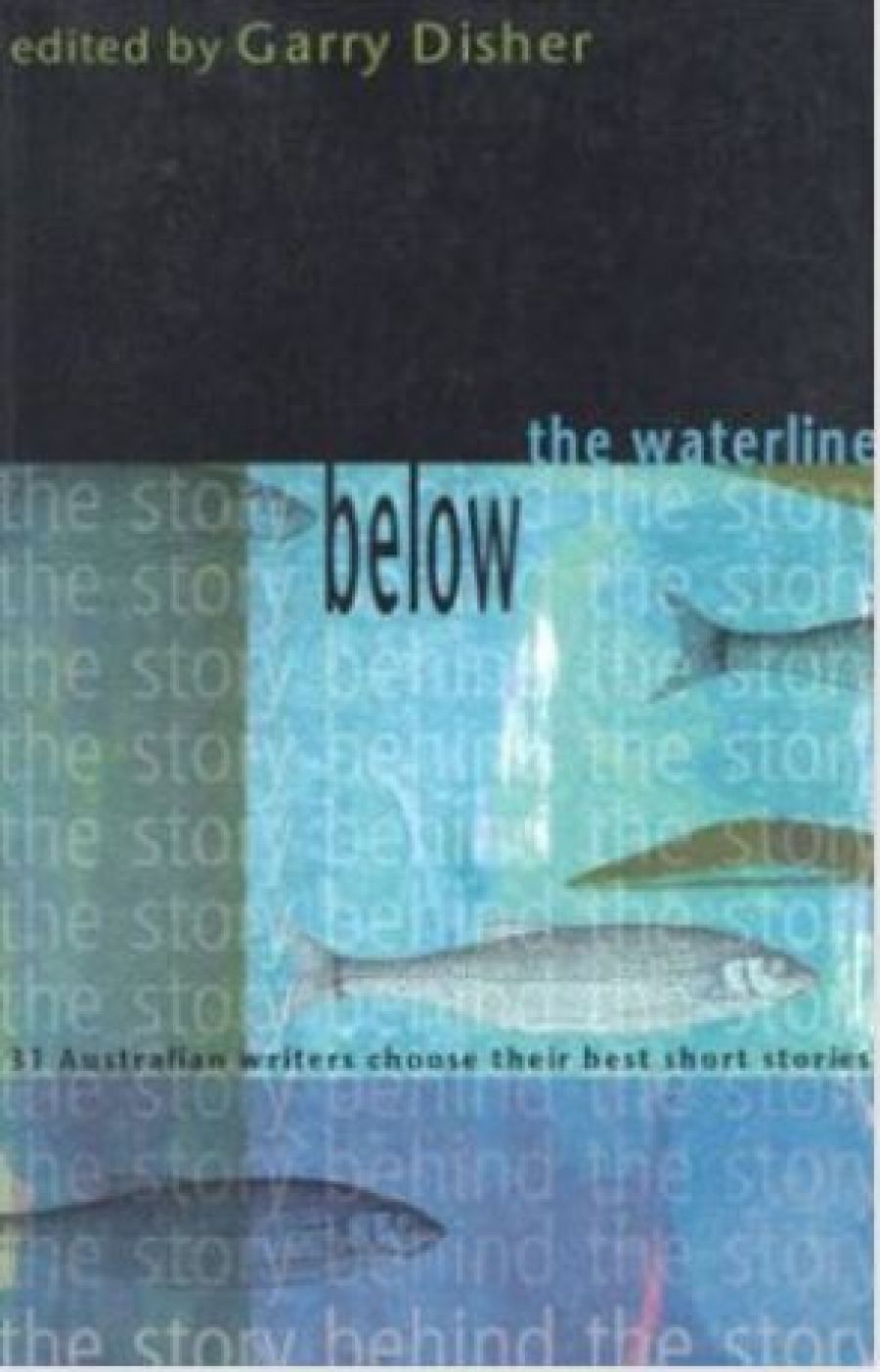
- Free Article: No
- Review Article: Yes
- Article Title: Personal Best
- Online Only: No
- Custom Highlight Text:
Garry Disher is at it again: following the Personal Best short story collections (1 and 2) with this one, Below the Waterline. Broadly speaking, he’s attempting to highlight in this one authors who have come to prominence since the 1980s. Again, he allows the chosen authors to pick a favourite short story, and to include a sort of postscript that explains why it’s a favourite.
- Book 1 Title: Below the Waterline
- Book 1 Biblio: Flamingo/HarperCollins, $17.95, 377 pp
It’s a good formula. As Disher says in the introduction, things have changed in the years since Personal Best 1. Then, there seemed to be a resurgence of interest in the form, now it’s sunk back into disfavour, unless a publisher decides on a theme anthology, when stories will be commissioned for that purpose.
Below the Waterline, then, is a boon for neglected short story writers, who get to make their own choice, and for us, who get to be reminded of what we’re neglecting. Also, for the writers who read these stories, there are intriguing snippets of insight into the writing process and into the criteria by which authors judge their own work.
Everyone will like some of these stories more than others. Some I already knew, and certainly Gillian Mears’s choice, ‘Mothers and old lovers’, is a favourite of mine too. So is ‘Nice Shootin, Cowboy’, by Anson Cameron. I hope this book will serve as an introduction to Cameron for those who don’t know him, and send them looking for the story collection with the same title, and for his 1998 novel. (Cheers to Picador, by the way, for publishing his stories.) I think Mears’ story is in Fineflour.
Of the authors who were new to me in Below the Waterline, those I’ll keep my eye out for from now on include Dorothy Horsfield, whose ‘Stamps’ has something of the unrelenting focus, the fascinating awfulness of Patrick White’s suburban vignettes; Fiona McGregor, whose ‘Tsunami’ is startlingly vivid and evocative, densely textured and beautiful, though the locale is seedy in the extreme. Richard Lunn and Sally Morrison were other discoveries.
Most of the writers are familiar to me, but you can come away from a novel with very little conception of the author’s range. I was impressed with Christos Tsiolkas’ ‘Hung Phat!’. He says in his Note to the story that he was sick of ‘being consistently identified as a “poofter” writer’. Not that Loaded was only, or even primarily about gayness; it was a pungently in-close family story. This story, though, is (as the author also says) about suburbs and ‘the mongrel children of feminism and Aussie Rules’.
And I liked the dignified understatement, the avoidance of surface coruscations (which can elsewhere be bothersome in his work), in Matt Condon’s story, ‘Ticking’. It’s gripping and very controlled writing. Condon judges it the most difficult piece he’s written, ‘because it required precise rhythm, craft and above all, dignity’.
Marele Day’s story is another poignant piece about a protracted dying, picking up the threads, so to speak, of the embroidery theme she worked with in Lambs of God. There are some pleasant felicities of juxtaposition, like that one, in this collection, the other important feature, apart from the selection of authors, in which Disher’s editorship makes itself felt.
Exposure only to longer works by certain authors can also lead one to decide so-and-so is not one’s cup of tea. I’d thought that about Isobelle Carmody, because fantasy usually isn’t my bag, and yet I was charmed by her story, ‘The Pumpkin Eater’, in Below the Waterline. She has invested reworked archetypes with both irony and profundity and made something clever and touching. Where I have sometimes found Brenda Walker dauntingly erudite, I liked the simplicity of her story, ‘The Cold’. I have found what I’ve seen of Adib Khan’s writing somewhat overworked, but there’s a gutsy directness to ‘Out There’. There are, of course, a few of these stories that don’t do it for me. I didn’t warm to Delia Falconer’s excursus into the world of Bath in the eighteenth century (but the story won the HQ short story competition so I’m sure she can live with that). Tony Linterman’s ‘The Pleasures of Eczema’ was more gothic than I could handle, though its rationale was sound. Liam Davison’s story I found a little old-fashioned.
The great majority of the stories were a pleasure to read, and have significantly adjusted my ‘take’ on many of the authors. Their comments were engaging and enlightening, and other writers will find them instructive as well. It’s a while since I’ve read an assortment of good stories in the one place, and I’d started to forget how particular a skill the art of the short story is. Two words from the Introduction offer themselves: ‘dreamlike’ and ‘sudden’.


Comments powered by CComment